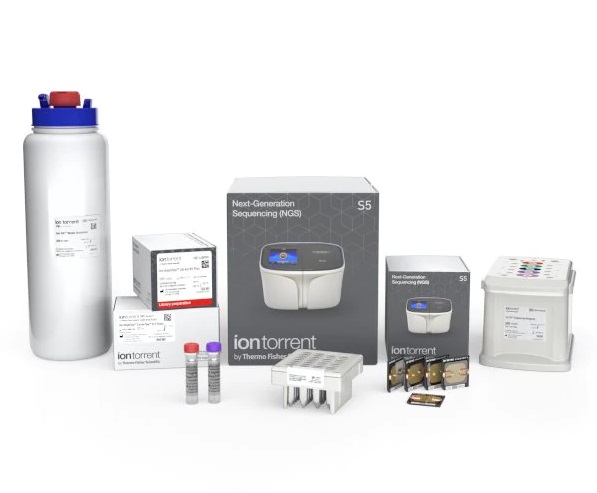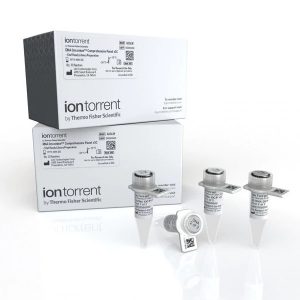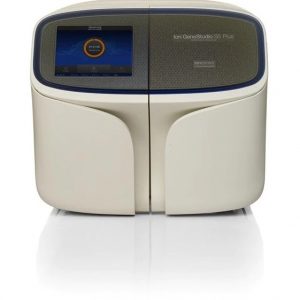All Products
CarrierSeq™ ECS Kit with Ion 530™ Chips (4 samples/chip)
Catalog number: A43585
The Ion Torrent CarrierSeq ECS kits provide all the reagents and materials necessary for a comprehensive, seamless, and flexible next-generation sequencing (NGS) workflow for expanded carrier screening (ECS). When used with an Ion GeneStudio S5 System, the kits enable a simple, end-to-end workflow for the detection of carrier-positive samples by research labs interested in maximizing the identification of carrier status using genomic DNA isolated from blood or saliva samples.The Ion AmpliSeq CarrierSeq ECS Panel included in the kits enables the detection of single nucleotide variants (SNVs), insertion/deletions (indels), and copy number variants (CNVs) associated with 418 inherited disorders in a single assay.
Benefits of the CarrierSeq ECS kits include:
Targeting of all coding regions and intron/exon boundaries of 420 genes implicated in 418 inherited disorders
Incorporation into a single NGS assay difficult-to-characterize genes due to homology as a result of paralogues (spinal muscular atrophy (SMN1 and SMN2)), pseudogenes (Gaucher disease (GBA and GBAP1)), 21-hydroxylase deficient congenital adrenal hyperplasia (CYP21A2 and CYP21A1P), and loci (alpha-thalassemia (HBA1 and HBA2))
For use with Carrier Reporter, intuitive data analysis software that quickly translates data into results with customizable analysis and reporting options
Flexible throughput options—kit formats available for 3, 4, 15, or 16 samples per chip or 6, 8, 30, or 32 samples per run
Comprehensive content and consolidated assays
The Ion AmpliSeq CarrierSeq ECS Panel provides comprehensive coverage of common and rare variants to help achieve higher per-disorder detection rate. The panel targets >14,000 amplicons that cover all coding regions of 420 target genes, including intron/exon boundaries, to genotype more than 28,000 SNVs and indels from the ClinVar archive of human variation. The panel also provides robust targeting for CNV analysis to maximize carrier status detection.
Genetic variants for a number of most prevalent yet serious disorders can be difficult to resolve by NGS assays, and so separate additional stand-alone tests are often required. The Ion AmpliSeq CarrierSeq ECS Panel consolidates such stand-alone assays into a single assay, including difficult-to-sequence genes, such as SMN1 for spinal muscular atrophy, GBA for Gaucher disease, CYP21A2 for 21-hydroxylase deficient congenital adrenal hyperplasia, and HBA1 and HBA2 for alpha thalassemia.
Streamlined implementation and workflow
The CarrierSeq ECS kits are an end-to-end solution that includes reagents for target amplification, library preparation, and sequencing with software for data analysis and reporting. The reagents are optimized to work together out of the box and ready to use with the Ion Chef and Ion GeneStudio S5 systems for template preparation and sequencing, respectively, and Carrier Reporter Software for reporting functionality with customizable options.
Straight-forward and powerful data analysis and reporting
Carrier Reporter Software is easy to use and designed specifically for carrier screening analysis and reporting. It incorporates the output of special analysis algorithms that address CNV and SNV/indel calling for technically challenging genes such as CYP21A2, GBA, HBA1/2, and SMN1.







